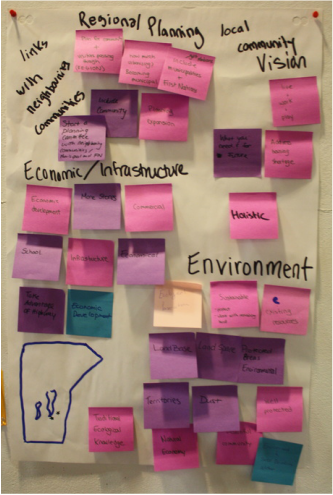What is the Indigenous Planning Studio?
|
The Indigenous Planning Studio is a 13-week Masters-level course (September to December). The term “studio” simply refers to a different style of teaching; instead of sitting in lectures and seminars, the students are working on a real-world planning project. This particular studio is run by the University of Manitoba’s Department of City Planning and typically involves eight to ten graduate students who are split up into small teams to work with a partnering First Nation.
Partnering First Nations identify the projects, with some input from me to ensure the students have the skill-sets to properly support the work. While I provides advice and direction to the students, and maintain contact with each partnering First Nation, the students are encouraged to work directly with their First Nation partners throughout the university term. It is very important for the students to visit the community they will be working with during the second week of the academic term (usually the third week of September), as this gives them to chance to meet their community contacts and to ask questions about the project. After the initial visit, the students will arrange additional meeting times to seek feedback on draft work. |
How to Get Involved?
|
Meet with me to discuss possible planning projects
We'll find a time to talk about what your community is hoping to achieve and how the students might contribute. I do ask that there is a designated person in each community who can act as the students’ primary point of contact. This person will often help them better understand the goals of the project, as well as any distinct community or cultural protocol. Develop an “Expression of Interest” letter Following our initial meeting, put some of your ideas for possible student work into a short “Expression of Interest”. Please indicate:
Please bear in mind that the university term starts the first week of September, so I usually like to have a firm commitment by late July . Please contact me as soon as possble, as there is a limited number of First Nations my students and I can work with each year. |
